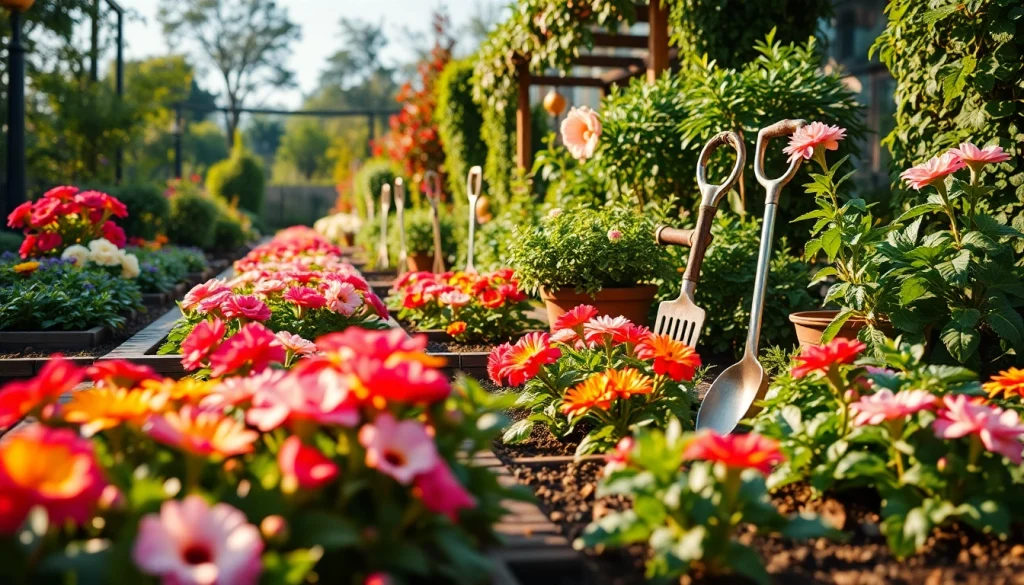
Understanding Garden Maintenance Services
In today’s fast-paced world, maintaining a beautiful garden can often fall by the wayside amid busy schedules and multiple responsibilities. This is where a garden maintenance service becomes invaluable. These professional services can help transform your outdoor space without the time and effort that DIY gardening requires. Whether you have a small backyard or an expansive estate, understanding garden maintenance services and their importance in preserving your green spaces is essential.
What Is Garden Maintenance?
Garden maintenance encompasses a full range of tasks designed to keep gardens looking their best year-round. From routine lawn care to specialized services like pruning, weeding, and planting seasonal flowers, garden maintenance ensures that your garden remains healthy and aesthetically pleasing. These services can be tailored to meet your specific needs and preferences, whether you require a simple lawn mowing service or comprehensive garden overhaul.
Why Hire a Professional Service?
While many homeowners may consider managing garden tasks themselves, hiring a professional service offers numerous advantages. Firstly, professional gardeners possess expert knowledge of regional plants and optimal gardening practices. This expertise enables them to provide customized care suited to your garden’s unique environmental conditions. Moreover, professionals can save you time and effort, allowing you to enjoy your outdoor space without the stress of upkeep.
Key Benefits of Garden Maintenance Services
- Expert Knowledge: Professionals are trained to identify plant diseases, pests, and the specific needs of your garden.
- Efficient Use of Time: Regular maintenance saves homeowners time that can be spent on more fulfilling activities.
- Increased Property Value: A well-maintained garden enhances your home’s curb appeal and can increase property value.
- Access to Specialized Tools: Gardening professionals use advanced equipment that may not be accessible to the average homeowner.
- Customized Care Plans: A professional service can create a seasonal plan tailored to your garden’s specific needs.
Essential Tasks in Garden Maintenance
Proper garden maintenance involves various tasks, each contributing to the overall health and vibrancy of your outdoor space. Here are some of the core activities involved in garden care:
Mowing and Edging Techniques
Lawn care starts with mowing, which should be done regularly to keep grass healthy and maintain its appearance. It is crucial to adjust the mowing height according to the grass type and season. For instance, during the growing season, a higher setting promotes root growth and drought resistance.
Edging creates defined boundaries between lawns and flower beds, enhancing the visual appeal of your garden. Techniques include using a spade or edging tool to create neat lines. Regular edging not only looks professional but also prevents grass encroachment into flower beds.
Weeding and Mulching Best Practices
Weeding should be a consistent part of garden maintenance as weeds compete with your plants for nutrients and water. Hand-pulling works for small areas, but larger gardens may require tools like hoeing for effective removal.
Mulching around plants helps retain moisture, suppresses weed growth, and regulates soil temperature. Organic mulches, such as wood chips or straw, provide additional nutrients as they decompose. It’s recommended to apply a layer of 2-3 inches around plants to maximize these benefits.
Pruning and Plant Care Strategies
Pruning is essential to enhance plant health and aesthetics. This involves removing dead or unhealthy branches, which facilitates better air circulation and allows more sunlight to reach leaves. Different plants require distinct pruning techniques: for instance, spring-flowering shrubs should be pruned after blooming, whereas summer-flowering plants should be pruned in early spring.
Regularly checking for pests and diseases is also crucial for plant care. Integrated Pest Management (IPM) strategies, such as introducing beneficial insects or using organic pesticides, can help manage pest populations without harming the ecosystem.
Choosing the Right Garden Maintenance Service
Selecting the right provider for your garden maintenance is paramount for ensuring quality care. Here are key considerations when evaluating potential service providers:
Evaluating Local Service Providers
Start by researching local garden maintenance services. Online reviews, referrals from friends or family, and platforms such as Yelp can provide insights into their reputation and the quality of their services. Look for providers that have positive feedback and a solid track record in your community.
Questions to Ask Potential Services
When interviewing potential maintenance services, here are essential questions to consider:
- What services do you offer, and can they be tailored to my needs?
- How do you price your services? Is there a flat rate or hourly charge?
- Can you provide references from past and current clients?
- Are you licensed and insured?
- What is your experience with garden types similar to mine?
Comparing Costs and Services Offered
Understanding the costs associated with garden maintenance services is vital. Prices can vary widely based on region, service package, and the provider’s expertise. Comparing several quotes ensures you receive a fair price for the services offered. While the most expensive option might suggest quality, it’s essential to evaluate the specifics of each service to find the best value for your needs.
Seasonal Garden Maintenance Tips
Adapting your garden maintenance to the changing seasons is crucial for optimal plant health. Here’s a rundown of what to focus on throughout the year:
Spring Preparation for Your Garden
Spring is the perfect time to prepare your garden for the new growing season. Start by cleaning out any debris, dead plants, and weeds that have accumulated over winter. Amend the soil with compost to boost its nutrient content, and plan your planting schedule according to your climate and plant types.
Summer Care and Maintenance Tasks
During the summer, consistent watering is crucial, particularly for newly planted flowers and vegetables. Consider implementing a drip irrigation system or soaker hoses for efficient water delivery. Regular deadheading of flowering plants encourages new blooms and maintaining mulching ensures moisture retention amid hotter temperatures.
Autumn Cleanup and Winterization Techniques
As the growing season comes to a close, autumn cleanup is vital for preparing your garden for winter. Remove any dead plant material to deter pests and diseases, and consider planting perennials or bulbs for spring flowers. Winterizing your garden includes applying a protective layer of mulch and caring for any pots or tools to ensure they withstand winter’s chill.
Measuring the Success of Your Garden
Evaluating the effectiveness of your garden maintenance can be accomplished through various metrics and observations. Here’s how to gauge whether your efforts are paying off:
Key Performance Metrics for Garden Health
Some key metrics to track include plant growth rates, flower yields, and the overall vitality of plants. Keeping a gardening journal can help you monitor these changes over time, allowing you to adjust your maintenance strategies based on what is most effective.
How to Assess Aesthetic Improvements
Aesthetic improvements can be somewhat subjective; however, maintaining a consistent theme, vibrant colors, and healthy plants typically indicate success. Regularly invite feedback from visitors and neighbors to gain external perspectives on the garden’s appearance.
Long-term Benefits of Continuous Maintenance
Consistent garden maintenance leads to long-term benefits, such as improved soil quality, enhanced biodiversity, and reduced pest problems. A well-maintained garden not only beautifies the property but also contributes positively to the environment, offering habitats for local wildlife and supporting healthy ecosystems.






